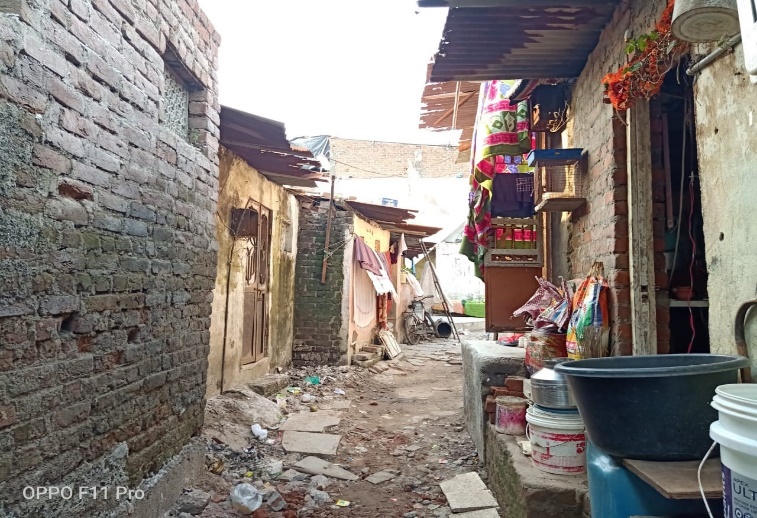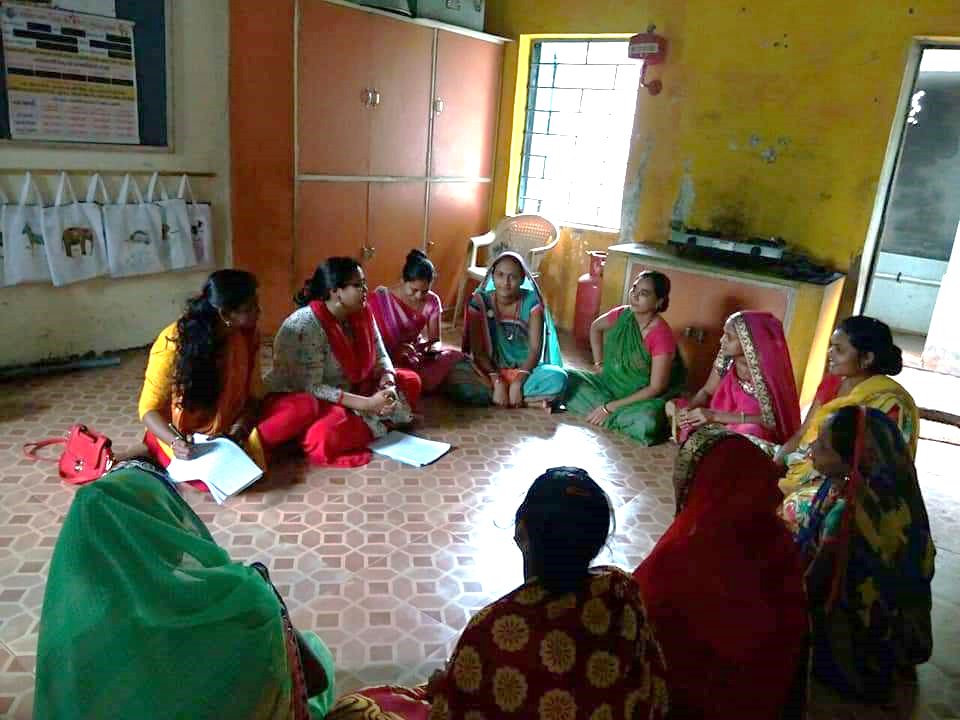Concerns Emerging From Women’s Perspectives On Abortion Services


I have been working in the development sector for the last 15 years. I realised only a few years ago that women of reproductive age in many countries couldn’t exercise their right to abortion. Globally, 41 percent of women live under restrictive laws. Legal restrictions on abortion do not result in fewer abortions, instead they compel women to risk their lives and health by seeking out unsafe abortion care. In countries such as India, where abortion is legal under the Medical Termination of Pregnancy (MTP) Act since 1971, and is offered for a broad range of medical, social, economic reasons; awareness generation about legality of abortion and availability of safe and legal abortion can play an important role in prevention of morbidity and mortality related to abortion.
For the past one decade, I have been working for improvement of adolescents’ and women’s sexual reproductive health in economically disadvantaged localities (bastis) in Vadodara, Gujarat. We train women from bastis as health workers who among other things, reach rights based sexual and reproductive health information to their fellow resident women. I genuinely believe that if we want to bring positive change in health, especially sexual and reproductive health, we have to address perceptions of women – our intervention should be based on women’s existing knowledge and practices. For me, it has been very interesting to look at and understand women’s concepts and experiences of abortion. In 2018 we did a small study in the bastis of Vadodara to explore women’s perceptions, treatment seeking and experiences with the health system.
I have been working in the development sector for the last 15 years. I realised only a few years ago that women of reproductive age in many countries couldn’t exercise their right to abortion. Globally, 41 percent of women live under restrictive laws. Legal restrictions on abortion do not result in fewer abortions, instead they compel women to risk their lives and health by seeking out unsafe abortion care. In countries such as India, where abortion is legal under the Medical Termination of Pregnancy (MTP) Act since 1971, and is offered for a broad range of medical, social, economic reasons; awareness generation about legality of abortion and availability of safe and legal abortion can play an important role in prevention of morbidity and mortality related to abortion.
For the past one decade, I have been working for improvement of adolescents’ and women’s sexual reproductive health in economically disadvantaged localities (bastis) in Vadodara, Gujarat. We train women from bastis as health workers who among other things, reach rights based sexual and reproductive health information to their fellow resident women. I genuinely believe that if we want to bring positive change in health, especially sexual and reproductive health, we have to address perceptions of women – our intervention should be based on women’s existing knowledge and practices. For me, it has been very interesting to look at and understand women’s concepts and experiences of abortion. In 2018 we did a small study in the bastis of Vadodara to explore women’s perceptions, treatment seeking and experiences with the health system.
Though abortion has been legal for almost 50 years, half the women in the bastis where we work, were still unaware about this. Some women believed that abortion is a sin and that ‘God does not look favourably on people who do it’. This strong belief may have implications for abortion seeking and morbidity following the procedure.
Having ‘enough’ children already, son preference, unmarried status, rape, failure of contraceptives, and fear of a child born with disability were common reasons why women underwent abortions in the bastis where we work. Rarely did a woman say that she has ‘a right to her own body’ or a ‘right to make her own decision if she did not want to continue the pregnancy’. The situation was worse when an unmarried girl or a single woman got pregnant and wanted to terminate the pregnancy.
“…a girl only tells her mother if she thinks that her mother is ‘friendly’ otherwise the girl would be beaten up…unmarried girls are scared. They fear society (society’s reactions), the family is boycotted and many times even the boyfriend does not support her in such a case.”
Fear of social repercussions often influenced the actions taken by unmarried girls. They were often worried about ‘being responsible for dishonouring the family name’ and scared of reactions from family members. This was the main reason for unmarried girls with unwanted pregnancies running away from their homes or even committing suicide.
Due to social taboos and stigma around abortion, many women reported purchasing abortion pills directly from the chemist either by using old prescriptions from the doctor or even without any prescription. They felt that this made the abortion very accessible and helped protect their privacy as well.
“…It is so easy nowadays that if a woman undergoes abortion, even her neighbours would not know about it.”
Women used home remedies such as eating ‘hot’ foods like raw papaya, papaya seeds, pepper, ‘ukalo’ (a strong spicy brew), jaggery syrup and nutmeg (jaiphal) for inducing abortion.
Women who went to health facilities for terminating pregnancy, preferred private sector providers because they believed that private providers maintained confidentiality. Unmarried girls especially chose not to go to a doctor in the vicinity of their bastis as ‘there are chances that people from the basti will come to know’. These girls also preferred providers from the private sector rather than the public sector. Women from the minority community preferred to seek services at private facilities as they felt discriminated against at the government hospital.
“They are very suspicious about us. They look at us very strangely. We feel awkward…Lot of time is spent but less money is required.”
Other reasons why women selected private facilities were perceived competence of provider, satisfactory in-patient facilities, doctors performing the procedures, and lack of insistence on an accompanying person or need for repeated visit to receive the services.
According to women, ‘safe abortion services’ were more than abortion at either a public or private health facility. They included availability of in-patient facilities such as bed, nursing care, medicines, food and cleanliness, attentive doctor and regular follow up. With ‘safe abortions’ they expected that there would be no post abortion complications such as bleeding, irregular menstruation, complicated subsequent pregnancies or infertility.
Women believed that abortion adversely affected a woman’s body. It caused weakness, anaemia, aches and pains including pain in pelvic and vaginal area, swelling / inflammation of uterus, ulcers or lumps in/on the uterus, irregular menstruation and psychological problems with symptoms such as loss of appetite, ‘feeling loose’, not feeling well, etc. There was poor awareness about temporary methods of contraception such as condom, oral contraception pills, injection or IUDs and they held themselves responsible for unwanted pregnancies.
The decision to terminate the pregnancy was often made jointly with husband. However, in some cases the decision to terminate the pregnancy was by either the husband or the mother-in- law without the involvement of the woman indicating the strong patriarchal community where women have lower social status, lower access to resources and lower decision-making power even about their own bodies.
We believe that the exploratory study on urban low-income women’s perceptions and experiences provides us pointers for our intervention programmes. Firstly, women and girls need information about their bodies, what we call health literacy. This has to be embedded in perspectives of reproductive and sexual health and rights as well as gender. The taboos and stigma around women’s bodies and their reproductive health issues need to be countered through this kind of health and sexuality education. More specifically, women need information on the legality of abortion and relevant contents of the MTP Act, details of medical abortion and other safe abortion methods. We believe that we have to give special attention to young girls’ sexuality and abortion issues, so that they don’t feel alone and can access emergency contraception and safe abortion services, when they need them.
*Reference: An exploratory study report done by SAHAJ and CommonHealth on “Safe Abortion: Knowledge, perception and practices amongst urban poor women in Vadodara, Gujarat” in August 2018.